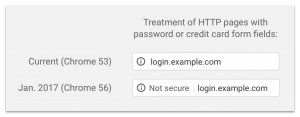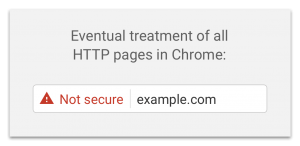10 tips for effective and SEO friendly website content
SEO optimization is a topic that generates many resilient myths. My customers ask me constantly whether they should really pay that guy $500 per week in order to perform some obscure magic that is supposed to propel the website to the top of Google’s search engine results. I usually tell them that their company is far away from needing SEO optimization measures on such a deep, technical level. Instead, they should focus on Google’s primary goal, which is finding good answers to questions. There are some key qualities that your website should have, such as being mobile-friendly, honor reasonable load speeds and possibly using an SSL certificate. So, in order to improve your ranking in Google, you should definitely try to publish content that is valuable, relevant and helpful to your readers!
I would love to have you among my subscribers. Get articles like this one once a week.
Getting a good rank on Google takes time, consistency and discipline. Your primary concern should be to produce good content on a regular basis. You want to be of service to your readers – that’s it. If you take that human-centered approach, you will do many things right automatically, as opposed to any attempts to hack Google’s algorithm. Google’s process to rate your website has become so sophisticated and is powered by artificial intelligence that only a fool would try to keep up with it.
1. Know your industry and your audience!
It strikes me how many people start a business without clearly thinking about those they want to serve. It is a common misconception that everybody is a potential customer of yours. I know it is scary to focus on a specific segment of people because somehow we think that the more people we target, the more we sell. The truth is that quite the opposite is the case. The closer you hone in on a demographic, the more interest you will capture.
My industry is web-development, and my audience are small to medium-sized businesses located in the San Antonio area that want to improve their first version of a website or web application. More specifically I am looking for people who want to harness my understanding of both technology and communication so that I can help them create an online presence that actually converts their audience into trusting, grateful and loyal customers. I try to work with clients with whom I can establish a long term relationship and with whom I share some core values. I believe in supporting women entrepreneurs, single parents, and companies that have a positive message to spread. I want to work with organizations where humans come first!
Do you have such a description of your target audience? If not, then this is where you need to start. How do you want to create relevant, valuable and helpful content for someone, if you have no idea who that someone is?
2. Define your goals and determine how you can measure your success.
Now that you know who you are serving, let’s find out what you are trying do achieve. Do you want to increase your sales, create a culture around an existing community, promote an idea, or something else?
Write down your goals and select the most important one to be your key performance indicator (KPI). Over the next 3 months try to write content with that metric in mind. Monitor it closely and see if you can find correlations between your website content and your indicator.
I highly recommend implementing Google Analytics into your website. This will allow you to track who your audience is, how long they stay on your page, what content they seem to like and which demographic they belong to.
Another important tool is the Google Search Console which will give you more data about your SEO performance. If your website needs technical improvements, the Google Search Console will provide a list of tasks you can tackle.
Now test, assess and reiterate until you find your perfect formula. There is no one-size-fits-all solution, that’s why you need to figure out what works for you, your goals and your audience.
3. Create valuable, relevant and helpful content.
Now that you know your audience, it is time to think about what problems they need to be solved. The only way of doing this is by listening to them! You have to become part of your audience if you really want to see the world from their perspective. Ideally, you start attending their meetings and interest groups. Listen carefully to their complaints and wishes. If you do not have the possibility to meet them in person, you can join online groups and forums. Your aim is to build up empathy for the people you are wanting to write content for.
Don’t confuse good content with a good sales pitch. Your website needs to be helpful without any expectations; at least to a certain degree. It should become a valuable resource for anyone belonging to your audience. If you build up trust with your audience over time by showing that you understand them and truly care about them, they will buy your services and products when the time is right.
4. Learn how to be a good writer.
If you want to become a good writer, read lots of good writers! Repetition is key to becoming good with anything. Make sure that your content is easy to ready. You are writing for SEO, not the next Pulitzer prize! Keep sentences short and avoid language that your audience doesn’t understand. If a fifth-grader can understand it, you’ve done well.
5. Use rich media to complement your articles.
Rich media are assets such as videos, pictures, illustrations, audio, and interactive animations. Use them throughout your articles whenever it makes sense. Make sure to add plenty of meta information to the platforms where your media is hosted. Pick a good title, provide keywords and plenty of descriptive text. Always add a link to your website, because that’s where you want to drive traffic to. If you use images, make sure that the alternative text field is populated. Search engines can not (yet) see what your pictures show, which is why you have to tell them.
Remember, Google wants to serve good and interesting answers to its users. An article with rich media annotations is much more fun that just plain text!
6. Link to other sources of authority and make sharing easy.
One of the basic factors in Google’s SEO methodology is looking at the quality of both internal and external links. This concept is based on the assumption that good sources like to link to each other. Therefore, you should include links to helpful websites whenever it makes sense. For instance, if you write about aviation security Google will trust you more if you refer to the Federal Aviation Administration‘s website, rather than a website that has little authority in your industry. Don’t forget to link to other articles within your website that are relevant. By interconnecting individual pages, you can guide traffic from high performing pages to those that need more exposure.
Conversely, you want lots of other high-quality websites to link to your page. This can be achieved by writing guest posts for other sites, and by making sharing your content as easy as possible.
7. Keep your site organized and easy to read.
Internet users have very little patience. They will take about six seconds to find what they are looking for. If they can’t find it, they are gone and will most likely click on the next site in the search engine results. Therefore it is important to have a clean and organized information architecture. Make sure to have a menu that is not overwhelming and put emphasis on content that is popular among your readers. Don’t clutter your site! Content needs breathing space, otherwise reading it becomes a challenge. Very often, less is more!
8. Use meta descriptions and site maps.
Make sure you fill out the meta description for each article. This is a very important step in making your content SEO-friendly! Meta information is found in your site’s HTML code. Ask your web developer for help. If you use WordPress, you can use a plugin such as the Yoast SEO plugin.
By the way, meta descriptions are not meta keywords – those are no longer relevant for SEO. Don’t believe me? Take it from Google then 🙂
Sitemaps are basically tables of content for search engines. Again, your developer or a plugin can help if you feel lost. Make sure to register your sitemap with the Google Search Console tool.
9. Make sure your website is mobile-friendly and loads fast.
I can’t believe that there are still websites that are not mobile-friendly, also know as responsive. A responsive website automatically adjusts to the medium used. The desktop version will differ from the smartphone version which will be different than the tablet version. Not only is this a must to improve your audience’s browsing experience, Google will also punish you with a bad SEO ranking if your site is not mobile-friendly. You can use Google’s Mobile-Friendly Test to see how your website performs.
As mentioned earlier, Internet users have little patience. Most users expect a response under 3 seconds. If your site doesn’t show within that time frame, the user might not even take a glance at it. Use Google’s PageSpeed Insights tool to assess where you stand in that regard.
Don’t panic if these tools show you poor performance. Speak to your web developer and try to improve step by step. Many oft the solutions proposed are not easy to implement and depend on the technology your website relies on.
10. Implement an SSL certificate.
Starting with the release of Chrome 56, any website that is not running HTTPS will have a message appear in the location bar that says “Not Secure” on pages that collect passwords or credit cards. It will look like this:
This is the first part of a staged rollout that encourages websites to get rid of plain old HTTP.
In an upcoming release, Google Chrome will label all non-HTTPS pages in incognito mode as “Not secure” because users using this mode have an increased expectation of privacy.
The final step in the staged rollout will be that Chrome will label all plain HTTP pages as “Not secure”. It will look like this:
(Source)
Not only will your brand appear unprofessional, some of your visitors will be scared and leave your site. Google has officially announced that they will use HTTPS as a ranking signal.
You need to collaborate with a developer to transition to HTTPS.
If you have enjoyed this post, please join my mailing list.
This is not a sales email and your info is safe with me! Once a week, I will send you a mail packed with information about the intersection of web technologies, business, and marketing.




Trackbacks/Pingbacks